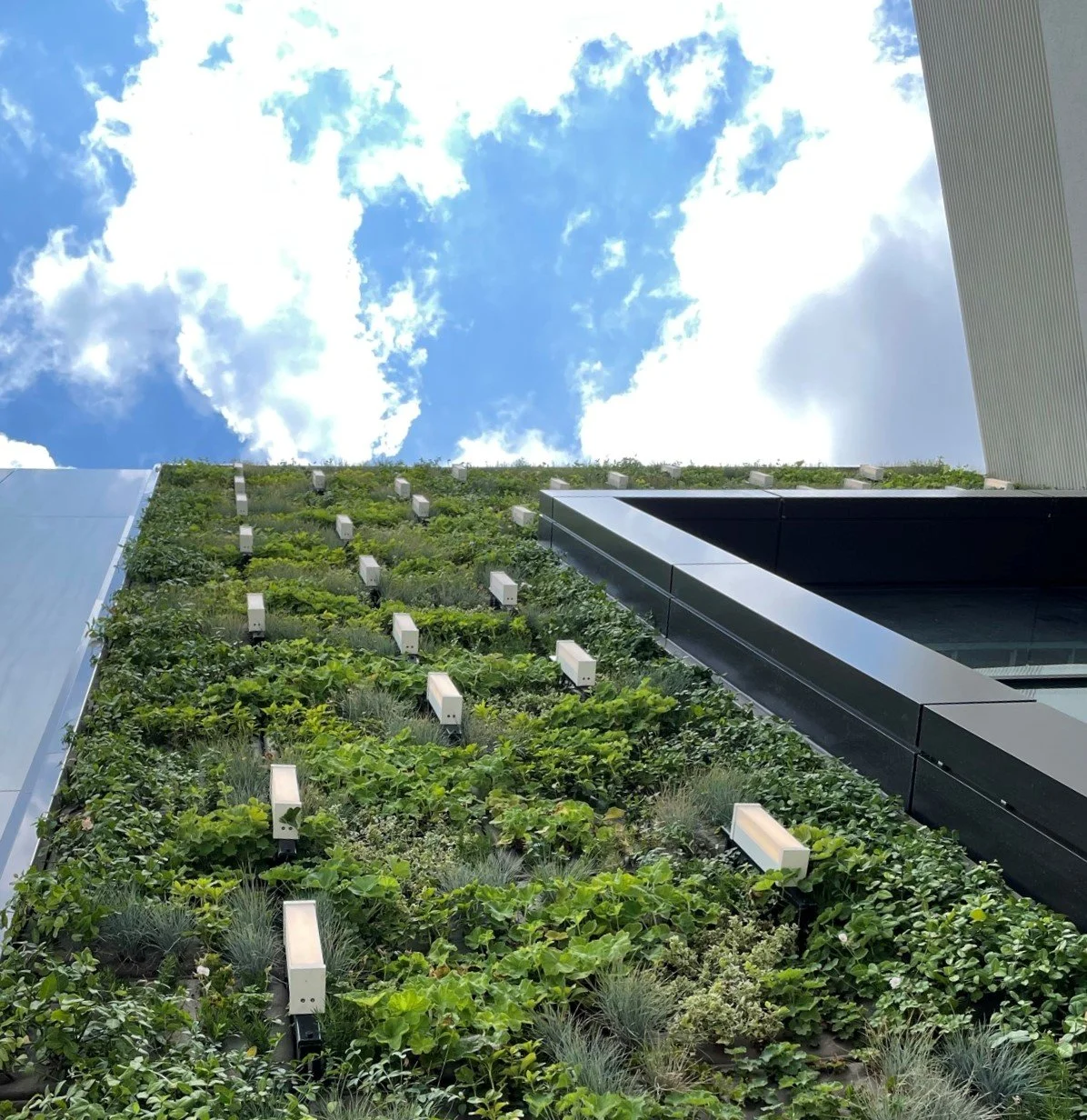How Living Walls Act As Natural Insulators
Table of Contents Show
Living walls are one of many green infrastructure technologies for improving building energy performance. Net Zero energy design is becoming commonplace in the built environment. With almost 40 percent of energy consumption coming from heating and cooling, it's crucial to understand sustainable solutions to reduce building energy consumption. Living Walls can offer energy conservation by improving buildings' thermal performance.
How Do Exterior Living Walls Protect the Building Envelope?
External living walls protect the building envelope, extending the facade's life and saving the owner costs on repairs down the road. The planted vegetation prevents dramatic temperature changes, preventing building corrosion from expansion and contraction occurring in extreme temperatures. The combination of plants and soil effectively protects against rain and wind. Foliage absorbs 50% of solar energy, and 30% of solar energy gets reflected. Compared to cladding, paints and other building coatings deteriorate over time. Green walls can be an effective solution for the long-term sustainability of a structure.
How Do Exterior Living Walls Improve Climate Control?
Vegetation can and will regulate the ambient temperature outside and inside the building. The growing medium and plants serve as a natural insulator, keeping the air inside the buildings cooler in the warmer months and warmer during the colder months. Compared to conventional building materials like concrete, brick, and metals, which store latent heat and can heat surfaces well over 130 Fahrenheit during the day. Studies of vertical living walls have resulted in “a reduced cooling load by 30%, equivalent to 3.6–4.8 kWh per day, and reduced peak load by 0.6–0.8 kW.” Living Walls are especially effective in dense urban centers by reducing heat island effect.
Can Interior Living Walls Contribute to Energy Conservation?
Plants help cool the air around them through evapotranspiration, the movement of water from the soil through the plant and into the atmosphere. Large plants also cool the air temperature through solar shading. One study showed, “if plants are used instead of blinds of double-layer curtain walls, a 20% reduction of the air conditioning load can be achieved.”
About The Author
Lily Turner is a biophilic designer, project manager, and living wall design-build specialist with extensive experience across the United States. She brings a unique perspective on integrating social, environmental, and economic values into living architecture to create greener, more sustainable urban cities.
Lily collaborates closely with architects, designers, and contractors to deliver tailored living wall solutions that align with budget, design goals, and project scale. She is also the Chair of the Green Roofs for Healthy Cities’ Living Wall Committee and an active member of the Green Plants for Green Buildings Committee, advocating for innovative green infrastructure in the built environment.




